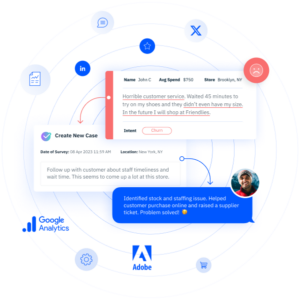Can You Hear Me Now? How to Listen for, Identify, and Fix Organizational Problems
Sometimes, the problems holding your organization back are easy to spot. Much of the time, though, organizational issues are well-hidden, well-integrated, or simply entrenched into the operating rhythm, which makes fixing them a bit more complicated. What follows is a quick overview of those tools and the best practices to bear in mind while using them.
Sometimes, the problems holding your organization back are easy to spot. Much of the time, though, organizational issues are well-hidden, well-integrated, or simply entrenched into the operating rhythm, which makes fixing them a bit more complicated.
Though trying to isolate and fix deep-rooted problems is not an easy or simple task, organizations can meet this challenge with perseverance and the power of customer experience data tools. What follows is a quick overview of those tools and the best practices to bear in mind while using them.
Step #1: Canvas the Company
The first step organizations should take to identify problems is to round up all of their data. That’s right—customer survey feedback, employee feedback, company metadata, and even external market and social data—scoop it all up and gather it in one place for analysis.
Though it probably doesn’t need spelling out, organizations can’t find problems if they examine some data sources and not others. Issues that may seem like they’re stemming from one department may actually be rooted in another. For this reason, it pays to have all data gathered in one place. Additionally, gathering from ALL data sources keeps all involved groups honest to the process and eliminates any bias that could creep into the improvement process.
Step #2: Identify Far-Reaching Problems
Once organizations have their data ready to go, they can begin scouring it for problems. The most efficient way to go about this process is to leverage an employee feedback tool to look for the biggest and most common problems, i.e. issues that are affecting multiple departments and processes.
Leveraging these listening tools has many benefits. First, organizations can identify issues that are affecting the most departments—and thus, the most customers. Secondly, the process of gathering and capturing multi-source data becomes repeatable. And thirdly, these tools can be used to help search for and isolate the small issues that comprise big problems.
Step #3: Implement Fixes
The reason why organizations should break big problems up into small ones is because it makes issues easier to address. Finding fixes for 10 small problems is still easier than trying to convene a one-size-fits-all solution that transcends departments and processes. Rendering problems down to more bite-size chunks also uncovers the root causes of problems—and makes those causes simpler to manage in both the short- and long-term.
Organizations that take the time to identify large-scale problems, cut them down to size, and take action to implement issue-by-issue fixes have a far greater chance of attaining meaningful, transformative success than those that don’t. Driving incremental improvement is also great from a culture perspective because it displays a focus on continuous improvement.
Looking for more guidance on how you can effect real change in 2020? Read “How CX Intelligence Can Drive Meaningful Product Innovation” today!

